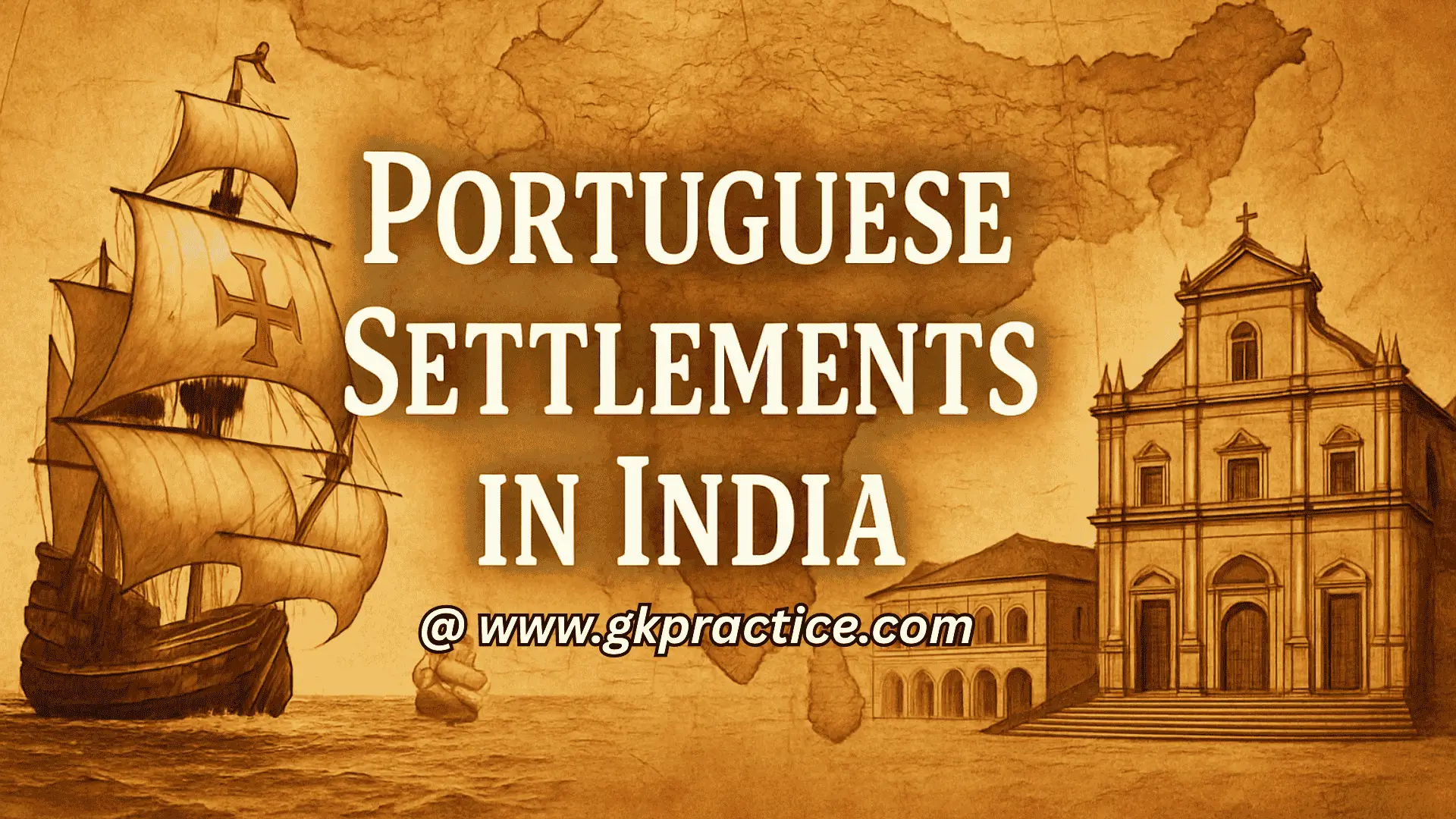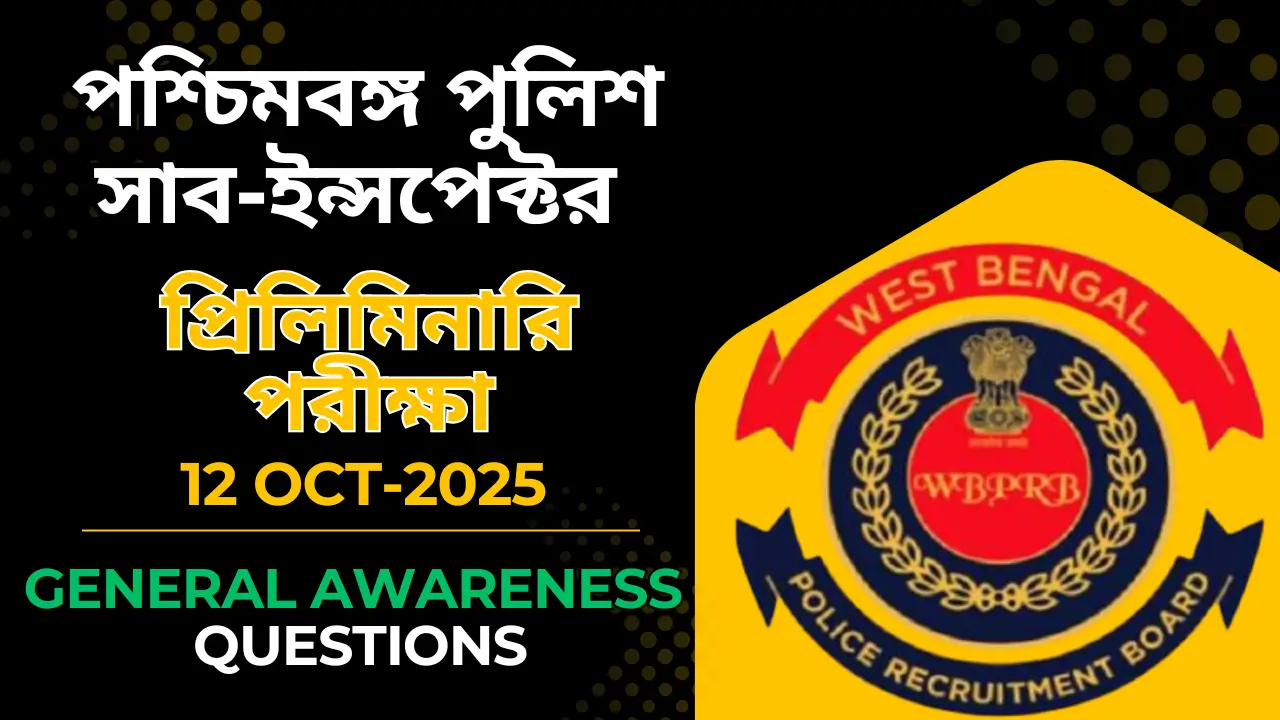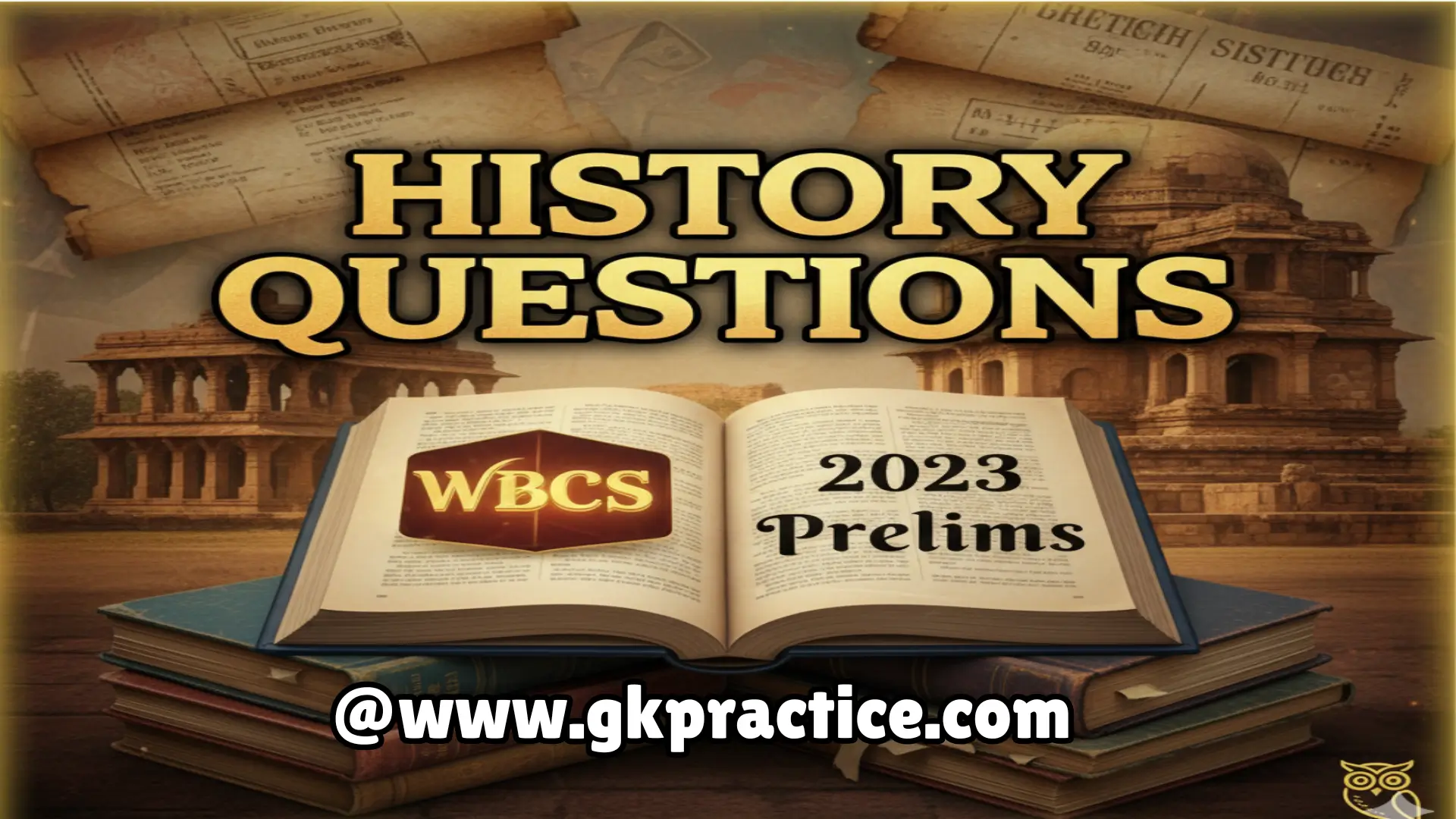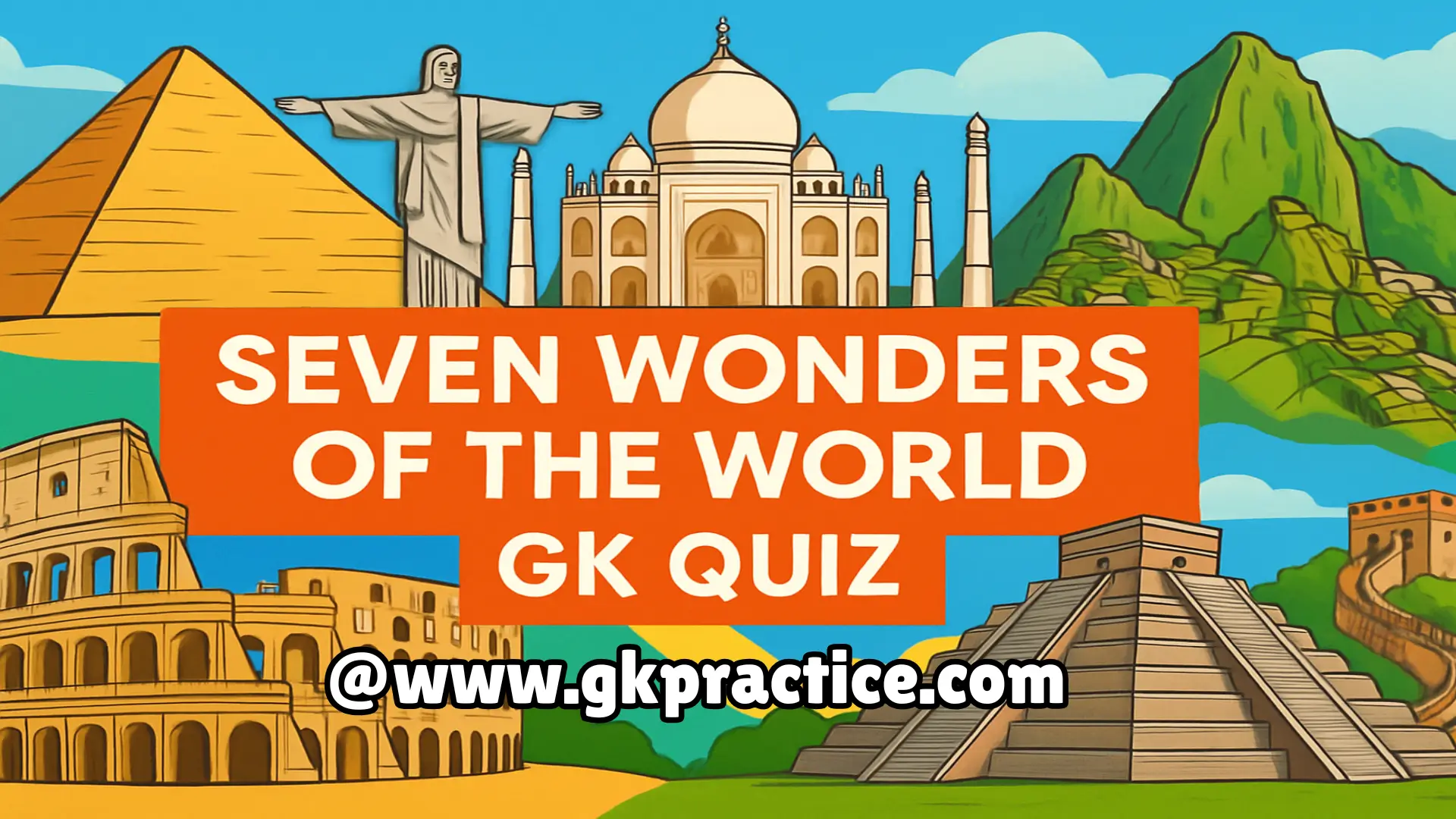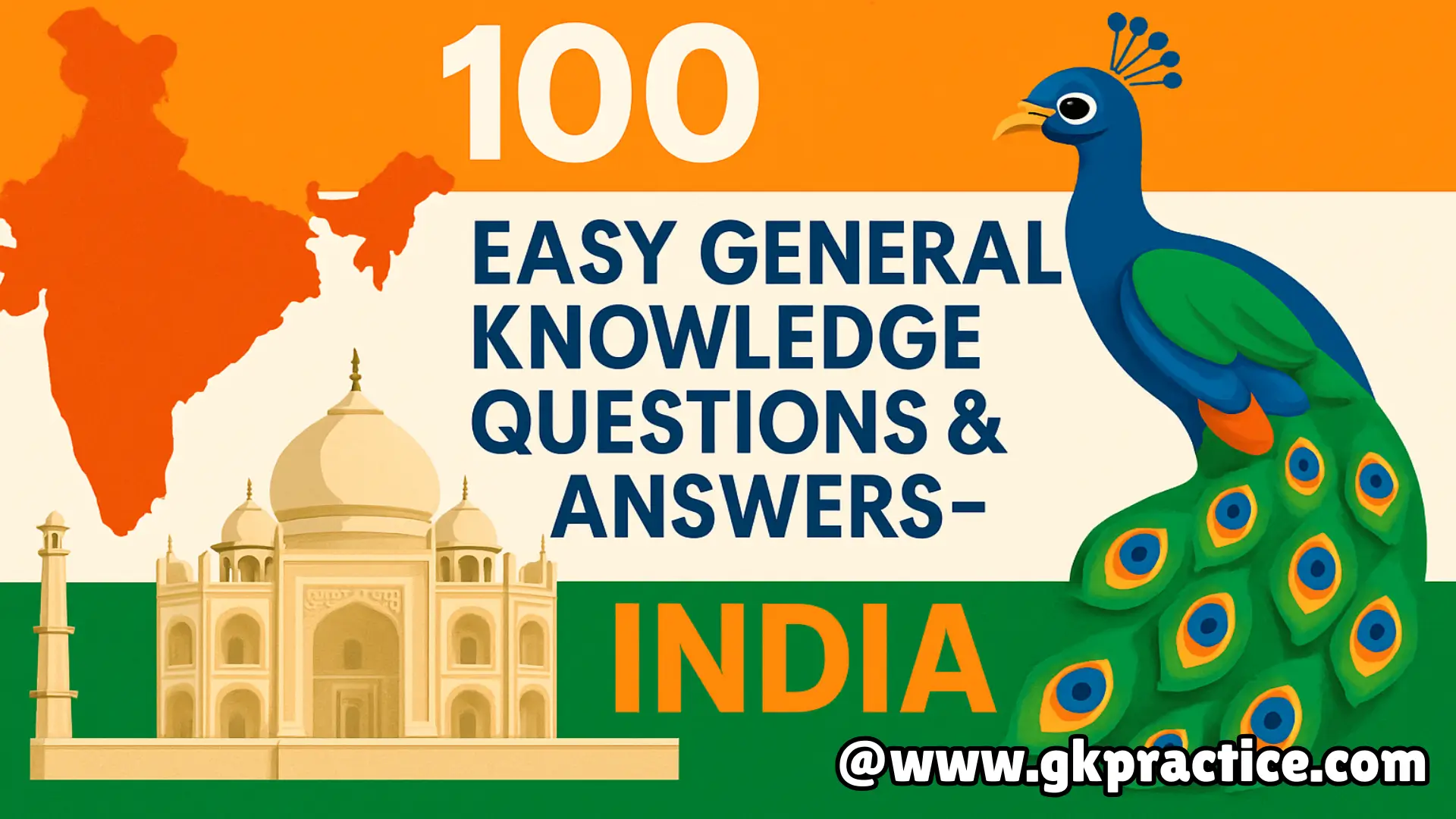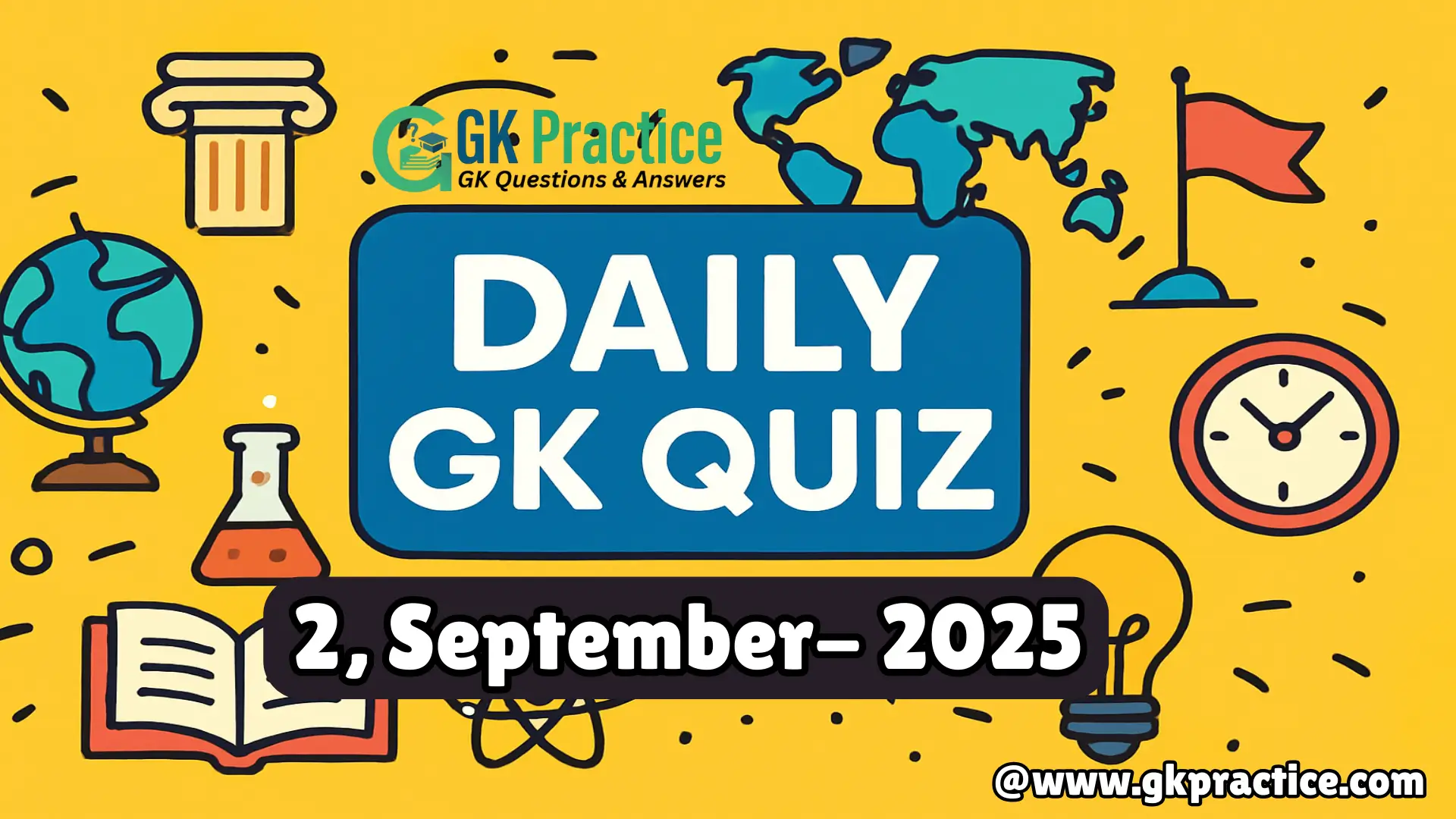Practice Portuguese Settlements in India GK Questions and Answers with detailed explanations. Perfect for competitive exams like UPSC, SSC, Railways, Banking, and other government exams.
Important Portuguese Settlements in India GK Questions On Colonies, Trade, and History in India for Exams:-
Q1) Who was the first Portuguese to reach India?
A) Bartholomew Diaz
B) Vasco da Gama
C) Pedro Alvarez Cabral
D) Francis Xavier
Explanation: Vasco da Gama was the first Portuguese explorer to reach India by sea in 1498, landing at Calicut. This opened a direct maritime trade route between Europe and India, significantly impacting global trade and marking the beginning of European colonial ambitions in the Indian Ocean.
Q2) The Portuguese first established their colony at which Indian city?
A) Bombay
B) Goa
C) Cochin
D) Surat
Explanation: Cochin was the first Portuguese colony in India. It served as an initial base for Portuguese trade on the Malabar Coast and helped establish their presence, facilitating further expansion to other parts of India, including the conquest of Goa.
Q3) In which year did Portuguese take control of Goa?
A) 1505
B) 1510
C) 1525
D) 1530
Explanation: Afonso de Albuquerque successfully captured Goa in 1510 from the Sultan of Bijapur. Goa became the administrative and commercial headquarters of Portuguese India, serving as a vital port and cultural center for over four centuries.
Q4) Who was the first Viceroy of Portuguese India?
A) Vasco da Gama
B) Francisco de Almeida
C) Afonso de Albuquerque
D) Pedro Cabral
Explanation: Francisco de Almeida was appointed the first Viceroy in 1505. He established Portuguese naval dominance and fortified key ports, setting the foundation for Portuguese imperial control of trade routes and territories along the Indian coast.
Q5) Which of these was not a Portuguese colony?
A) Daman
B) Diu
C) Machilipatnam
D) Goa
Explanation: Machilipatnam was not a Portuguese colony; it was controlled mainly by the Dutch and later the British. The Portuguese held strategic ports like Goa, Daman, and Diu on India’s western coast to secure trade dominance.
Q6) The Portuguese colony of Goa remained under their rule until:
A) 1857
B) 1947
C) 1961
D) 1950
Explanation: Goa remained a Portuguese colony for over 450 years until 1961, when India conducted Operation Vijay to annex Goa into the Indian Union, ending nearly five centuries of Portuguese rule and colonial presence in India.
Q7) Which city was the capital of Portuguese India after Cochin?
A) Bombay
B) Goa
C) Daman
D) Pune
Explanation: After initially establishing in Cochin, the Portuguese moved their capital to Goa in 1530. Goa’s excellent harbor and strategic location made it the main administrative and military center for Portuguese India.
Q8) Who introduced tobacco to India?
A) Dutch
B) Portuguese
C) English
D) French
Explanation: The Portuguese introduced tobacco to India as part of their colonial trade during the 16th century. Tobacco quickly became widespread in Indian society, illustrating the exchange of goods between the New World and India through Portuguese maritime routes.
Q9) Which famous missionary was associated with Portuguese India?
A) William Carey
B) Francis Xavier
C) Robert Clive
D) Thomas Roe
Explanation: Francis Xavier was a prominent Jesuit missionary who evangelized in Portuguese India, particularly Goa. His work contributed to the spread of Christianity and reinforced Portuguese cultural influence in their Indian territories during the 16th century.
Q10) Which year marks the arrival of Vasco da Gama in India?
A) 1492
B) 1498
C) 1500
D) 1510
Explanation: Vasco da Gama arrived at Calicut in 1498 by sailing around the Cape of Good Hope. This historic event established the sea route from Europe to India, revolutionizing global trade and European colonial expansion in Asia.

